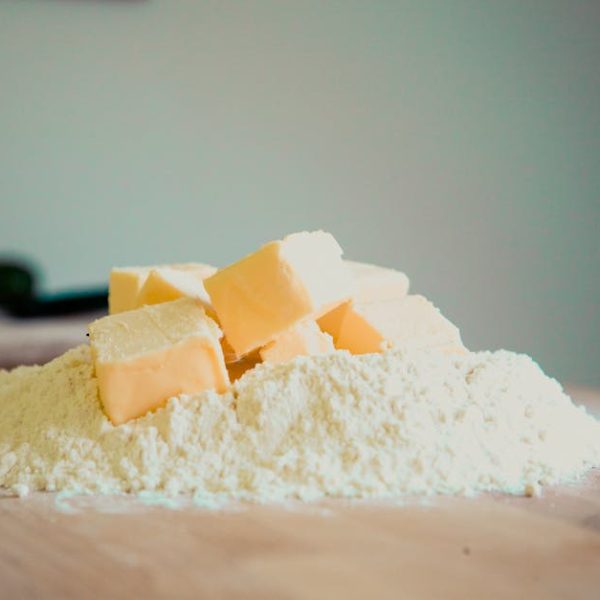Freezing potato salad can initially seem perplexing. Most of us, after all, associate potato salad with picnics, barbecues and a host of other warm-weather festivities. However, there are several reasons you may want to consider it.
For one, freezing can help prevent food wastage. After a big gathering, you might find yourself with more potato salad than you (or your family) can consume. Instead of throwing it away, freezing offers a way to extend its shelf life. In another situation, if you find yourself with extra potatoes or other salad ingredients, making a big batch of potato salad and freezing portions for later can save both time and resources.
However, while it sounds convenient, there are factors to take into consideration. Freezing can lead to changes in both texture and taste. Frozen and then thawed potato salad might not have the same crunch and freshness as when it was just made. The extent of these changes also depends on the ingredients used in your salad. Therefore, it’s essential to weigh these factors before deciding whether freezing is the right choice for you.
Before You Freeze: Factors to Consider
When it comes to freezing potato salad, not all spuds are equal. For instance, waxy potatoes like red and yellow hold up better in the freezing process compared to starchy varieties such as the Russet.
Similarly, the salad ingredients can significantly influence how well your salad freezes and subsequently thaws. Many potato salads include mayonnaise or hard-boiled eggs, but these do not freeze well. Mayonnaise can separate, leading to an oily, unappetizing mess, while frozen eggs can turn rubbery.
To make a freezer-friendly option, consider modifying your recipe. Opt for a vinegar-based dressing instead of the mayonnaise. By doing so, you make meal prep more manageable and create a version that is better equipped to handle the stress of freezing without compromising flavor or texture.
How to Freeze Potato Salad for Best Results
If you’ve considered the factors and decided to go ahead with freezing your potato salad, there are steps to ensure the best possible outcome after thawing your dish.
Firstly, allow your salad to cool completely. This step is essential as placing any hot food in your freezer can rapidly bring down the internal temperature, putting other stored items at risk. It also ensures that the salad freezes evenly.
Portion your potato salad into freezable containers, leaving at least half an inch of headspace to take into account the expansion that occurs when water in the food freezes.
But not just any container will do. It’s critical to choose a container that is airtight to protect your salad from the freezer’s dry environment. Also, consider how much you want to freeze in one container. Freezing in smaller containers or bags allows quicker thawing and ensures you only thaw as much as you need.
Here’s a quick checklist:
☑ Cool down the potato salad before freezing.
☑ Use an airtight freezable container.
☑ Leave half an inch of headspace for expansion.
☑ Consider the portion size for each container.
By following these steps, you can increase the chances of enjoying a appetizing, vibrant salad even out of the freezer.
Thawing and Reheating: Bringing Your Salad Back to Life
Now that your salad is frozen, the next step in the process is bringing it back to life. The thawing process, just like the freezing one, requires careful attention.
When it’s time to enjoy your salad again, make sure to thaw it slowly in the refrigerator rather than at room temperature. This avoids sudden temperature changes which can turn your salad soggy. Generally, it should take around 10-12 hours for your salad to thaw completely using this method.
After thawing, you might notice some extra water in your salad. This is normal as freezing causes ice crystals to form in the salad which subsequently melts during thawing. Give your salad a gentle but thorough stir to redistribute the water. If there is too much liquid, there’s a pro tip you can try.
Pro Tip: If your salad is too watery or soggy after thawing, try adding fresh ingredients to improve the taste and texture. Diced celery or bell pepper can bring back the missing crunch and a spoonful of fresh dressing can brighten the flavor. If the salad is still too watery, you can drain off the excess liquid. On the other hand, if the salad seems dry, fresh dressing can moisten it again.
The aim here is to get the salad back to a state that is as close as possible to its pre-freezing freshness.
Proper Storage and Shelf-Life: Maximizing Your Salad’s Freshness
Proper storage practices are key in maintaining the freshness and taste of your frozen potato salad. As already discussed, using an airtight container or wrapping your salad in multiple layers of high-quality plastic wrap can significantly reduce the risk of freezer burn – a common problem in frozen food when air reaches the product, causing it to dry out and develop unpleasant tastes.
Additionally, consider labeling each container with the date of freezing. This will make it easier for you to keep track of how long it’s been stored and to use it up within the optimal period.
Generally speaking, frozen potato salad can last up to three months in a standard household freezer. After this time, it’s likely that the texture and taste will begin to deteriorate. However, the salad can still be safe to eat beyond this if the freezer is maintained at zero degrees Fahrenheit or lower.
Here are some best practices:
✔ Maintain a consistent freezer temperature.
✔ Protect the salad from air exposure by using airtight containers or quality plastic wrap.
✔ Label and date each container.
✔ Try to consume the salad within its optimal shelf-life of three months.
By mastering the art of freezing, thawing, and storing correctly, you’ll soon realize that while the fresh, just-made version is usually the best, potato salad can still be a delicious and convenient dish to have stashed in your freezer. After all, reducing food waste and having ready-to-eat meals on hand is a win-win, wouldn’t you agree?
Key Takeaway:
- Freezing potato salad can be a practical solution to prevent food wastage or to prepare meals in advance.
- The quality of frozen potato salad greatly depends on the type of potatoes and other ingredients used. Waxy potatoes and vinegar-based dressings deal better with freezing and thawing than starchy potatoes and mayonnaise.
- Correct methods of freezing, thawing, and storing potato salad are vital. It’s essential to cool the salad before freezing, portion it properly, and use airtight containers. Thawing should be conducted in the refrigerator and not at room temperature.
- Reviving thawed potato salad might require incorporating fresh elements to improve the taste or texture.
While freezing potato salad may alter its texture and flavor slightly, it is undoubtedly a practical method for longer storage and reducing food waste. Remember, the right techniques and a little extra care can salvage the majority of your salad’s original freshness. Make sure to add some fresh ingredients after thawing to refresh the dish if needed.
FAQs
Q: Why do some ingredients not freeze well in potato salad?
A: Some ingredients, such as mayonnaise or hard-boiled eggs, don’t freeze well because they can separate or turn rubbery when frozen and then thawed. This can lead to undesirable changes in the texture and flavor of the salad.
Q: Can I freeze potato salad that has been sitting out at a picnic or barbecue?
A: It’s best not to freeze potato salad that has been sitting out for long, particularly in warm weather. The risk of bacterial growth increases with time, especially if the salad contains ingredients that quickly spoil, like mayonnaise or eggs.
Q: How do I know if my thawed potato salad is safe to eat?
A: If stored and thawed correctly, your potato salad should be safe to eat. However, if you notice an off-smell, discoloration, or mold, do not consume it.
Q: Can I refreeze potato salad if I’ve thawed more than needed?
A: It’s generally not advised to refreeze thawed food, including potato salad, as this can increase the risk of food-borne illnesses. Always try to portion your salad before freezing to avoid this situation.
Q: Does the freezing process affect the nutritional value of the potato salad?
A: Freezing can slightly reduce the levels of certain nutrients, like vitamin C, in vegetables. However, the overall impact on the nutritional value of your potato salad should be minimal.
Feel free to share this article using the social share buttons and discover more food-related tips and guides on our website.






